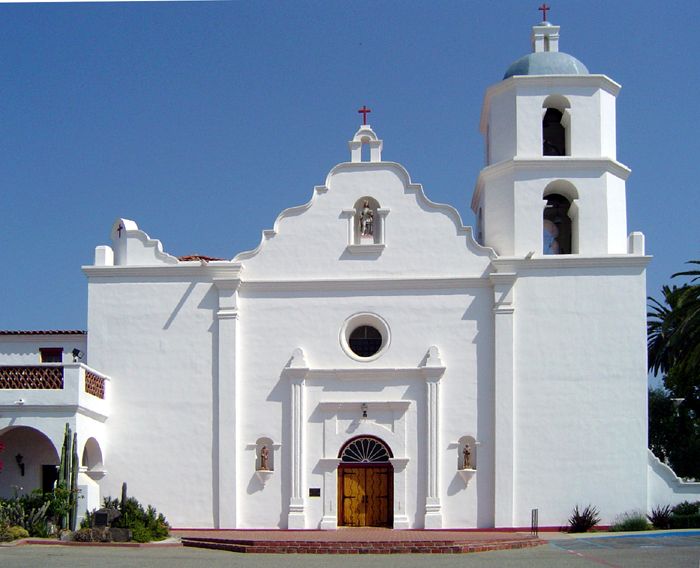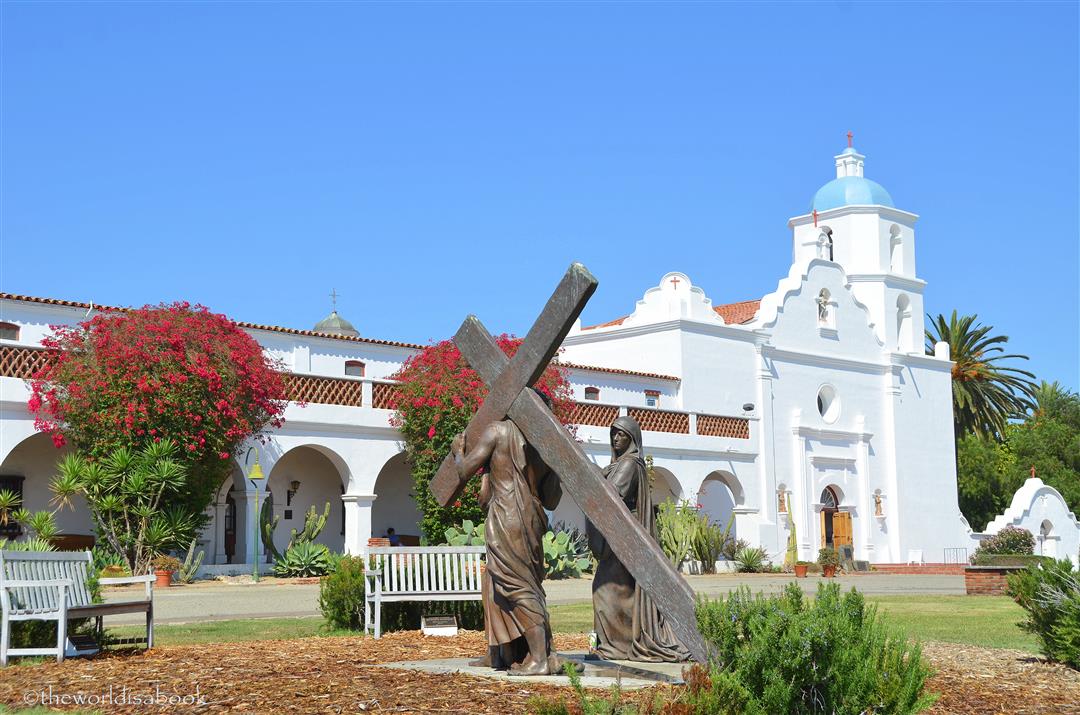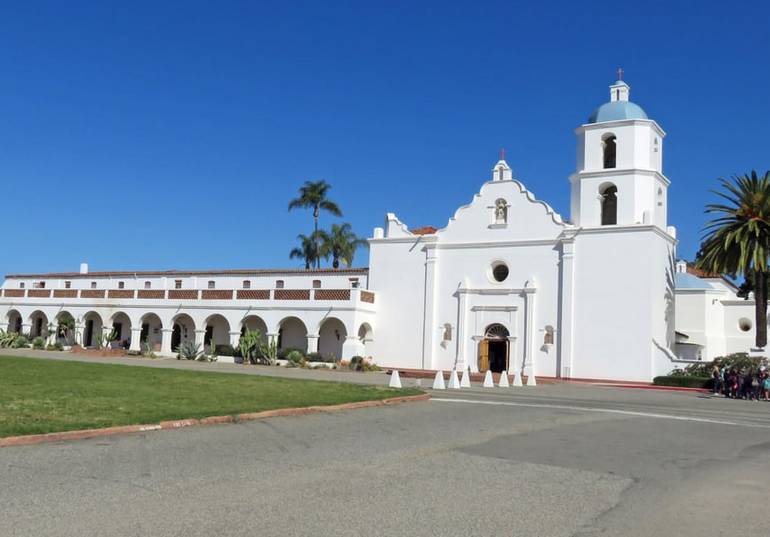
San Luis Rey: The Enduring Majesty of California’s ‘King of the Missions’
OCEANSIDE, California – Nestled amidst the rolling hills of North San Diego County, a majestic edifice of adobe, tile, and stone stands as a testament to a bygone era, its imposing presence commanding respect and curiosity. Mission San Luis Rey de Francia, often hailed as the "King of the Missions," is more than just a historical landmark; it is a living, breathing chronicle of California’s complex origins, a place where grand ambitions, spiritual zeal, and profound human stories converge.
From its expansive quadrangle to its iconic domed church, San Luis Rey embodies the pinnacle of the Spanish Colonial mission system in California. But beneath its serene beauty lies a narrative woven with threads of triumph and tragedy, innovation and exploitation, faith and resilience – a story that continues to resonate in the Golden State today.

The Genesis of a Giant
The year is 1798. Spain’s grip on Alta California, its northernmost colonial outpost, is solidifying. To connect the existing missions and further convert the indigenous populations, Father Fermín Francisco de Lasuén, the successor to the legendary Junípero Serra, sought to establish a new mission. His chosen site, a fertile valley watered by the San Luis Rey River and home to a large population of Luiseño people (as they would later be called by the Spanish, after the mission), was ideal.
On June 13, 1798, Father Lasuén dedicated the new mission to Saint Louis IX, King of France. From its inception, San Luis Rey was destined for greatness. Lasuén’s vision, coupled with the organizational genius of Father Antonio Peyri, who would oversee the mission for over three decades, set the stage for its rapid ascent. Peyri, a man of immense practical skill and unwavering determination, transformed the nascent outpost into an agricultural and spiritual powerhouse.
"Father Peyri was truly the architect of San Luis Rey’s prosperity," notes Dr. Sarah Miller, a historian specializing in California missions. "He had a remarkable ability to manage resources and people, creating a self-sufficient empire that dwarfed many of its counterparts."
The Golden Age: An Empire of Faith and Labor
Under Peyri’s guidance, San Luis Rey quickly earned its regal moniker. By 1830, it was the largest and most populous of all 21 California missions, housing over 2,800 indigenous neophytes. Its lands stretched for hundreds of thousands of acres, supporting vast herds of cattle, sheep, and horses. The mission’s orchards yielded bountiful harvests of olives, grapes, and citrus, while its fields produced wheat, barley, and corn.
Architecturally, San Luis Rey was a marvel of its time, a testament to both Spanish design principles and the skilled labor of the Luiseño. The main church, completed in 1815, features a striking octagonal dome – a unique element among the California missions – and a grand, Moorish-influenced façade. The extensive quadrangle, measuring approximately 500 feet on each side, enclosed workshops, living quarters, and storerooms, creating a self-contained village.
One of the mission’s most distinctive features is its elaborate lavandería, an open-air laundry and bathing area fed by an intricate aqueduct system. This innovative complex included sunken gardens, fountains, and carved stone gargoyles, demonstrating a sophistication rarely seen in frontier settlements. It was not merely functional but a space of beauty and communal gathering, a testament to the ingenuity that defined the mission’s golden age.

"The lavandería is a perfect illustration of the mission’s ambition," says Father David Gaa, OFM, a Franciscan friar currently serving at San Luis Rey. "It shows a desire not just for practicality, but for order, beauty, and a certain level of comfort, even in a developing frontier."
The success of San Luis Rey, however, came at a profound cost to the Luiseño people. While the missionaries introduced new agricultural techniques, crafts, and the Christian faith, they also imposed a rigid, communal lifestyle that often clashed with indigenous traditions. Thousands of Luiseño were compelled to live and work at the mission, their spiritual beliefs suppressed, their freedom curtailed, and their populations decimated by European diseases to which they had no immunity. The grand structures and productive fields were built on their forced labor, a stark and uncomfortable truth that forms an indelible part of the mission’s legacy.
Decline and Desecration: A Century of Neglect
The golden age of San Luis Rey, like that of all the California missions, was finite. With Mexico’s independence from Spain in 1821, the mission system’s imperial backing dissolved. The Mexican government, wary of the Franciscans’ power and eager to redistribute land, enacted secularization laws in the 1830s.
In 1834, San Luis Rey was secularized. Its vast lands were parceled out, its livestock dispersed, and its buildings fell into disrepair. Father Peyri, heartbroken by the unraveling of his life’s work, departed for Mexico, taking with him a bell from the mission church – a poignant symbol of his enduring connection. The Luiseño people, who had been promised their ancestral lands, found themselves dispossessed once more, caught between the changing political tides and the loss of their traditional way of life.
For decades, San Luis Rey endured a period of profound neglect. The grand structures crumbled, roofs caved in, and weeds reclaimed the once-manicured courtyards. During the Mexican-American War, the mission briefly served as an encampment for U.S. troops. Later, it was used as a sheep ranch and even a stagecoach stop. By the late 19th century, the "King of the Missions" was a ghostly ruin, its former glory a distant memory.
Rebirth and Restoration: A Labor of Love
The tide began to turn in 1892 when the U.S. government returned the mission to the Catholic Church. This act paved the way for a remarkable story of restoration, largely spearheaded by a remarkable individual: Father Joseph O’Keefe.
In 1893, Father O’Keefe, an Irish-born Franciscan, arrived at the desolate mission. He found a scene of utter decay, but saw not ruins, but potential. With little funding but boundless determination, he embarked on a monumental task of reconstruction. He lived in a small, partially restored room, tirelessly working to clear debris, repair walls, and breathe new life into the historic site.
"Father O’Keefe’s dedication was legendary," explains Miller. "He was essentially a one-man restoration crew for years, relying on donations and his own sheer will. He laid the groundwork for everything we see today."
In 1895, the mission officially became a Franciscan seminary, and the friars returned to establish a new community. Over the subsequent decades, the restoration efforts continued, meticulously rebuilding the church, the quadrangle, and the surrounding structures. Organizations like the California Landmarks Club contributed significantly to the preservation work, ensuring that San Luis Rey would not be lost to history.
A Living Legacy: The Mission Today
Today, Mission San Luis Rey stands as a vibrant, active institution. It serves as a parish church, a museum, a retreat center, and a working monastery for the Franciscan Friars. Visitors can explore the beautifully restored church, wander through the serene cemetery (which includes the grave of José Antonio Serrano, a prominent Californio ranchero), and marvel at the museum’s extensive collection of artifacts. The lush, historic gardens offer a tranquil escape, echoing the mission’s agricultural past.
The mission also plays a crucial role in education, hosting thousands of schoolchildren each year who come to learn about California’s history. It is a place of pilgrimage, contemplation, and community gathering, seamlessly blending its ancient past with its modern functions.
"We see ourselves as stewards of this incredible legacy," says Father Gaa. "It’s not just about preserving old buildings; it’s about keeping the spirit of this place alive, while also acknowledging and learning from its complex history."
The Nuanced Narrative: Beauty and Burden
The story of Mission San Luis Rey, like that of all the California missions, is a multifaceted one. It represents the architectural and agricultural ingenuity of its founders, the enduring power of faith, and the remarkable resilience of its structures. Yet, it also serves as a poignant reminder of the immense suffering and cultural disruption inflicted upon California’s indigenous peoples.
The mission system, while foundational to California’s development, fundamentally altered the trajectory of native lives. The forced assimilation, the loss of land and language, and the devastating impact of disease cast a long shadow over the mission’s otherwise impressive achievements. This dual narrative – of breathtaking beauty and profound burden – is an essential part of understanding San Luis Rey’s place in history.
As visitors walk through the hallowed halls and sun-drenched courtytyards of the "King of the Missions," they are invited not just to admire its grandeur, but to reflect on the entirety of its story. It is a story of colliding cultures, of ambition and sacrifice, of spiritual aspirations and human costs. Mission San Luis Rey de Francia stands as a powerful, enduring monument – not just to California’s past, but to the ongoing dialogue about how we interpret and learn from our shared, complicated history. Its majesty is undeniable, but so too is the weight of its legacy, inviting all who enter to engage with a past that continues to shape the present.


